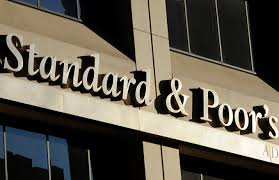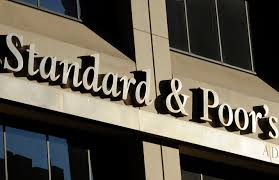
There are telltale signs of fading enthusiasm in U.S. stocks which have become increasingly difficult to ignore even as the S&P 500 Index clawed its way to a fresh record and squeezed out a third consecutive weekly gain.
The SPDR S&P 500 Trust, the biggest exchange-traded fund tracking the U.S. equity benchmark, is testament to the latest trend and developments. Till the end of last week, investors had pulled $3.8 billion out of it in this month. And the possibility of the longest streak of monthly outflow since the start of the bull rally in 2009 has been ignited by that development as the fund is on pace for a fourth consecutive monthly outflow.
And the $237 billion SPDR fund that’s thinning is not the only one that is suffering. ICI data show that in the week ended July 12, traders took $2.1 billion out of U.S. mutual funds and ETFs. In comparison, $5.1 billion went into various funds all around the world. Since 2008, allocation to U.S. stocks is the most underweight, found out a survey by the Bank of America Merrill Lynch’s most recent fund manager survey.
“We’ve contributed to that because we’ve been moving money out of large-cap stocks in the U.S.,” Ed Keon, managing director and portfolio manager at Quantitative Management Associates LLC, said. “We’re not bearish, it’s just a question of better growth with lower valuations elsewhere.”
Geopolitics played a significant part in this because, as an intensifying investigation into President Donald Trump stoked concern that his economic agenda may stall, the S&P 500 retreated and fell back after the index touched new highs last week. Adding 0.5 percent in the five days, the benchmark gauge ended at 2,472.54. and last week, ending the week at a record 5,921.525, the Nasdaq 100 Index jumped 1.4 percent. The Dow Jones Industrial Average slipped 0.3 percent to 21,580.07.
Despite the index reaching all-time highs, the S&P 500’s price-to-earnings have been kept at a multiple below its March peak due to strong earnings growth this year. Even with that, most equity valuations outside the U.S. remain more compelling.
Compared with the S&P 500’s 21.6, German and French shares trade at a trailing P/E of as low as 18.9 in Europe. Emerging-market stocks tracked by MSCI Inc. trade at 16.1 and Japanese shares are at 19.2. MSCI’s world index excluding the U.S. trades at 19.7.
And as the 10-year Treasury yield dropped nine basis points. Real estate shares added 0.8 percent, climbing 2.6 percent in their best performance since February, utility shares led the S&P 500’s advance last week. Real estate shares added 0.8 percent. And as the Nasdaq 100 Index jumped 1.4 percent, technology stocks rallied for the fourth week in five. Industrial and financial stocks weighed on the market
(Source:www.bloomberg.com)
The SPDR S&P 500 Trust, the biggest exchange-traded fund tracking the U.S. equity benchmark, is testament to the latest trend and developments. Till the end of last week, investors had pulled $3.8 billion out of it in this month. And the possibility of the longest streak of monthly outflow since the start of the bull rally in 2009 has been ignited by that development as the fund is on pace for a fourth consecutive monthly outflow.
And the $237 billion SPDR fund that’s thinning is not the only one that is suffering. ICI data show that in the week ended July 12, traders took $2.1 billion out of U.S. mutual funds and ETFs. In comparison, $5.1 billion went into various funds all around the world. Since 2008, allocation to U.S. stocks is the most underweight, found out a survey by the Bank of America Merrill Lynch’s most recent fund manager survey.
“We’ve contributed to that because we’ve been moving money out of large-cap stocks in the U.S.,” Ed Keon, managing director and portfolio manager at Quantitative Management Associates LLC, said. “We’re not bearish, it’s just a question of better growth with lower valuations elsewhere.”
Geopolitics played a significant part in this because, as an intensifying investigation into President Donald Trump stoked concern that his economic agenda may stall, the S&P 500 retreated and fell back after the index touched new highs last week. Adding 0.5 percent in the five days, the benchmark gauge ended at 2,472.54. and last week, ending the week at a record 5,921.525, the Nasdaq 100 Index jumped 1.4 percent. The Dow Jones Industrial Average slipped 0.3 percent to 21,580.07.
Despite the index reaching all-time highs, the S&P 500’s price-to-earnings have been kept at a multiple below its March peak due to strong earnings growth this year. Even with that, most equity valuations outside the U.S. remain more compelling.
Compared with the S&P 500’s 21.6, German and French shares trade at a trailing P/E of as low as 18.9 in Europe. Emerging-market stocks tracked by MSCI Inc. trade at 16.1 and Japanese shares are at 19.2. MSCI’s world index excluding the U.S. trades at 19.7.
And as the 10-year Treasury yield dropped nine basis points. Real estate shares added 0.8 percent, climbing 2.6 percent in their best performance since February, utility shares led the S&P 500’s advance last week. Real estate shares added 0.8 percent. And as the Nasdaq 100 Index jumped 1.4 percent, technology stocks rallied for the fourth week in five. Industrial and financial stocks weighed on the market
(Source:www.bloomberg.com)





